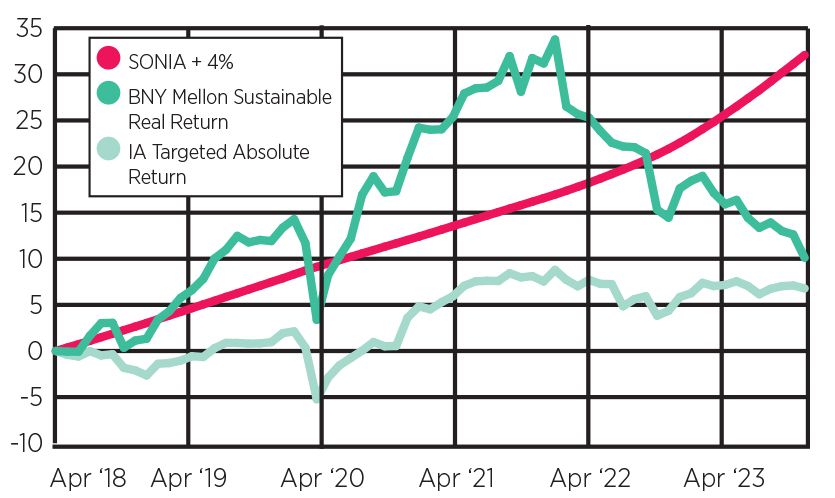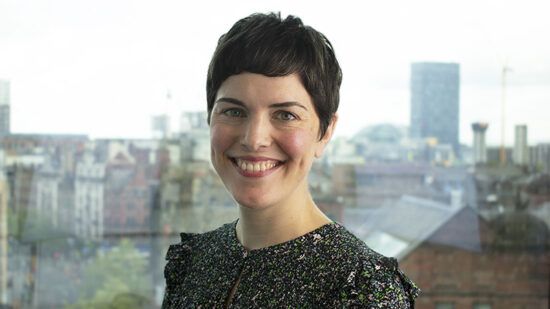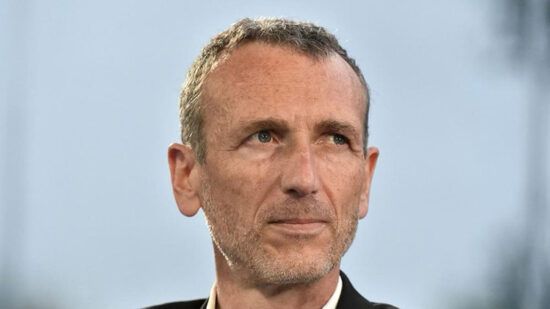The BNY Mellon Sustainable Real Return fund aims to provide some shelter during market wobbles, while also delivering long-term growth in a sustainable way.
Matthew Brown and Philip Shucksmith have been the fund’s lead managers since launch in April 2018. They’re both experienced investors and have served on the Real Return team for well over a decade. But BNY Mellon’s team-based investment process is built on the principle the whole is greater than the sum of its parts. The fund’s performance is down to the individual contributions of all team members.
See also: – The full Fund in focus series
The team aims to make money in a variety of market conditions. They do this using a mix of assets that broadly fall into two camps. The first is called the ‘return-seeking core’. It currently accounts for around 68% of the portfolio and invests in assets the team think will provide long-term growth, such as shares and bonds issued by well-run, financially secure companies with a unique set of advantages over the competition. When selecting these companies, the team also considers how well they manage their impact on the environment and society.
Recent investments in this section of the portfolio include agricultural equipment maker Deere. Factors like population growth and climate change are creating a pressing need to improve farming productivity. The team believes Deere is in a good position to benefit because of its focus on automation and precision agriculture.
The rest of the portfolio is called the ‘stabilising layer’ and is invested in government bonds, derivatives, commodities and cash, with the aim to add stability to returns.
The managers alter the amount invested in the return-seeking core and the stabilising layer depending on their view of the world.
The fund’s sustainable ‘red lines’ mean companies that violate the UN Global Compact Principles (a UN pact on human rights, labour, the environment and anti-corruption) and those that generate a significant portion of their revenue from socially or environmentally harmful areas are not considered for the fund. It also won’t invest in any company that makes more than 10% of its revenues from weapons, tobacco, gambling and a variety of other sectors some investors may consider unethical.
The responsible investment team has power of veto over companies held in the BNY Mellon Sustainable Real Return fund. This means the final decision is separated from the managers and helps provide an additional layer of challenge.
The team engages with the companies they invest in on a range of ESG issues and report on their progress in their quarterly responsible investment report.
BNY Mellon has invested a significant amount of time and resource into their responsible investment proposition in recent years. This includes the hire of Therese Niklasson, the firm’s global head of sustainable investment, one of the industry’s foremost sustainability experts.
See also – Green Dream with Newton IM’s Niklasson: Identifying funding gaps
Although the fund aims to protect investors’ money when markets fall, that doesn’t mean it can’t lose money, as we’ve seen in the last few years. Since launch the fund hasn’t performed as well as its official benchmark, SONIA +4%, although it’s ahead of peers in the IA Targeted Absolute Return sector.
Performance has struggled recently with the ‘stabilising layer’ mostly to blame. The bulk of the losses came from derivative positions. The team had a negative macroeconomic view for 2023 so had high level of derivatives in place to protect against projected losses in American and European markets. Currency positions also held back performance.
Despite recent performance, I still have conviction in the investment team behind this fund. They’ve built up a good track record over a long period of time with the BNY Mellon Real Return fund, which launched in 1993. The Sustainable Real Return fund could be a good option for a more cautious investors seeking steadier long-term gains, and those who wish to invest in responsible funds. It could also add some balance to more adventurous portfolios focused on mainly on company shares.
BNY Mellon Sustainable Real Return fund performance since launch









